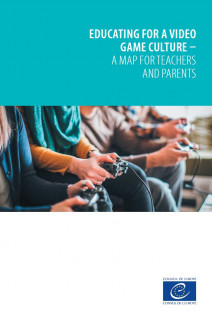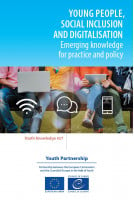Video games: a complex medium whose popularity is growing extremely rapidly, posing new challenges in the education of children and young people
Children, teenagers and young people today live in a world profoundly influenced by technology and digital media. It has become almost impossible not to come into contact with mobile phones, tablets, laptops, console games and other forms of technology, whether for educational or entertainment purposes. Video games are an important aspect of this digital landscape and in recent years they have grown very rapidly in terms of popularity, relevance and complexity. Video games are fun, engaging and designed to capture players’ attention. These factors bring new opportunities but also new challenges for the education of children and young people.
This volume of the Digital Citizenship Education series aims to make teachers and parents – indeed all adults with an educational role – aware of the complexity of this medium as well as the potential risks and opportunities that come with it. This publication also aims to provide readers with some useful strategies to help them choose the most appropriate video games and to engage in meaningful dialogue with stakeholders.
Promoting a video game culture means generating a pedagogical reflection around video games: thinking about them as a cultural tool able to offer opportunities, not only to have fun, but also to think, learn and develop as a person. It also means considering the video game worthy of being the object of study and of an accurate and careful analysis of its characteristics, its mechanics and its language.
ACKNOWLEDGEMENTS
Author
Contributors
SUMMARY INTRODUCTION TO THIS GUIDE THE 10 DOMAINS OF DIGITAL CITIZENSHIP WORLD 1 – THINGS TO KNOW ABOUT VIDEO GAMES
Level 1.1. A multifaceted medium
Level 1.2. A strong market
Level 1.3. The video-gaming community
Level 1.4. Gaming devices
Level 1.5. “Flow” and gaming
Level 1.6. Online stores and online services
Level 1.7. Age and content ratings
Level 1.8. Parental control tools
World 1 – Things to know
WORLD 2 – POTENTIAL RISKS OF VIDEO GAMES
Level 2.1. Micro-transactions, in-app purchases and loot boxes
Level 2.2. Online hate speech and video games
Level 2.3. Violent content
Level 2.4. Stereotypes, gender representation and attention to minorities
Level 2.5. Video-gaming addiction
World 2 – Potential risks
WORLD 3 – POTENTIAL BENEFITS OF VIDEO GAMING
Level 3.1. Characteristics of video games
Level 3.2. Learning from video games
Level 3.3. Using educational video games
Level 3.4. Using video games to stimulate tangential learning
Level 3.5. Using video games to develop critical thinking
Level 3.6. Video games and creativity
World 3 – Potential benefits
VIDEO GAMES MENTIONED REFERENCES
Télécharger un extrait (376.85k)









